Grow your Shopify app in 2025 – Part 1: Marketing & Traffic Acquisition

Every day, 10 new Shopify apps join the 10K apps on the Shopify app store. Some of them thrive. Months after launching, they pass $100K MRR on Shopify. What is their secret?
A great product? Sure, you have to have a great product to succeed in the Shopify app store. But it’s not enough. There are many more 4.5+ star Shopify apps than there are $100K+ MRR Shopify apps.
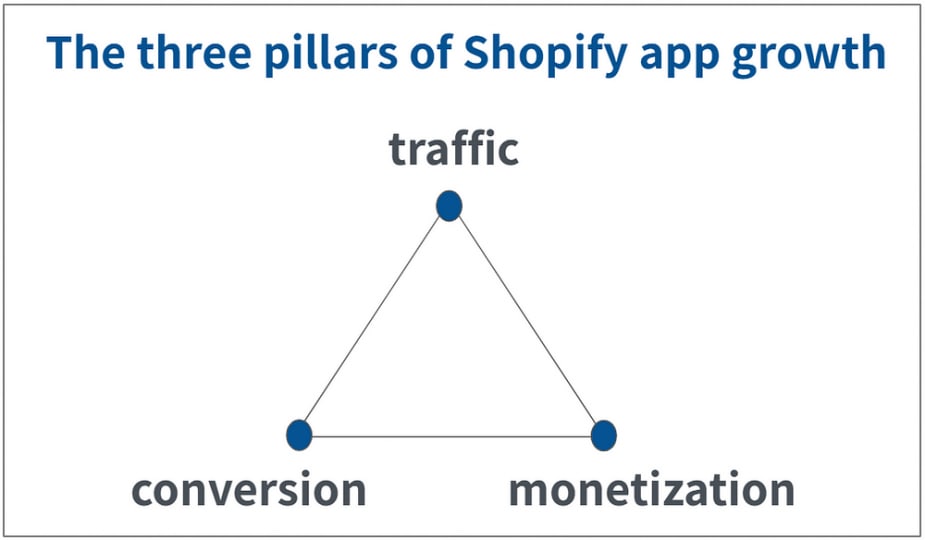
Grow organic and paid search traffic for your best keywords. Develop other Shopify app marketing tactics that drive valuable traffic.
Optimize your landing page or Shopify app card, your Shopify app store page, and your post-install flow for conversion.
Present your pricing optimally. Differentiate your subscription plans correctly. Consider usage-based or hybrid pricing.
To scale your Shopify app, you must know which keywords and marketing campaigns to focus on.
For organic traffic, it’s critical to prioritize your top keywords based on the value they generate for your business.
To bid correctly on performance marketing keywords, you need to know your value per visitor for each keyword.
To develop Shopify app marketing tactics beyond search marketing, you must know which tactics lead to significant revenues.
Prys is a Shopify app growth platform that merges Google Analytics and Shopify Partners data into user journeys with end-to-end attribution.
You can use Prys for free to get prioritized keywords for SEO, app store visitor values by keyword, new keyword suggestions for performance marketing, and revenues generated from each of your non-search marketing tactics.
You can easily grow organic traffic for valuable keywords by placing strategic keywords in your Shopify app store page listing and related places. The more prominently you place a keyword, the higher you rank for that keyword in Shopify’s (and Google’s) organic results. The higher you rank, the more free traffic you get.
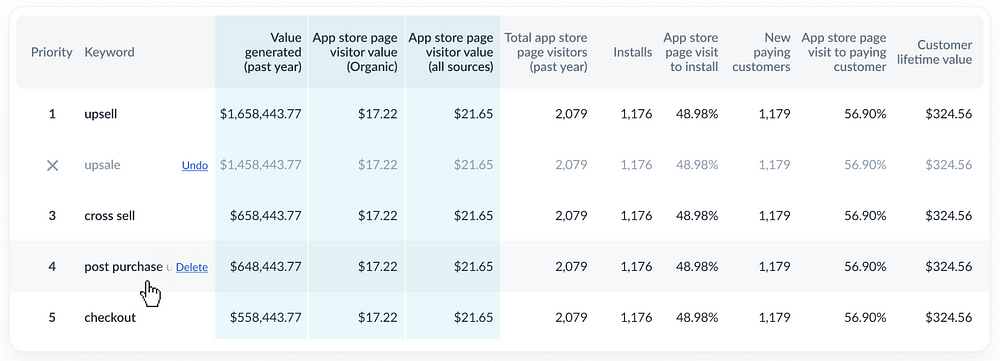
Performance marketing expands your reach beyond organic. If you’re just starting with ads, test your top 5–10 keywords on Shopify and Google ads. Fine-tune using negative keywords, and expand your keywords and bids at positive ROI.
Prys shows you your value for each keyword so you know how much to pay per click. In addition, you get suggestions on new keywords to test.
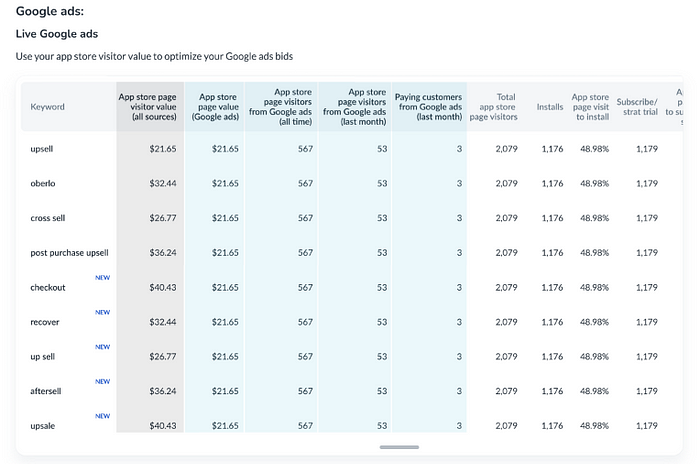
There are many effective ways to market Shopify apps beyond search marketing. Different tactics work for different apps. Try the tactics that you believe may work. Make sure you can measure if they do.
If you’ve been doing marketing for some time, you’ve accumulated insightful data. As soon as you connect your app to Prys, you’ll be able to see which Shopify app marketing tactics drive revenues and should be expanded.
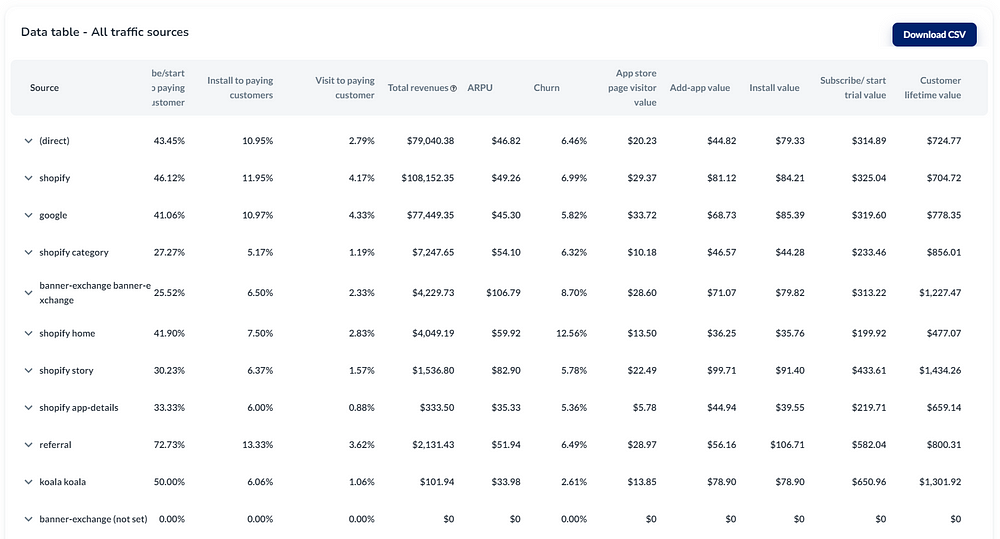
The average app converts around 1% of its store page visitors to paying customers.
Some Shopify apps convert over 5%. These apps have highly efficient funnels, allowing for aggressiveness in traffic acquisition while maintaining positive ROI. They are the apps that have become Shopify category leaders with Shopify MRRs well beyond $100K.
Most Shopify apps have the potential to at least double their funnel’s conversion rate. Doubling your conversion rate means you get twice as many new customers from your current traffic. With this increased efficiency, you can drive more and more traffic to the top of your funnel and convert some of that additional traffic into more and more new customers. A virtuous growth cycle.
Prys shows you where you stand compared to the benchmark of all connected Shopify apps. Seeing your relatively weak steps tells you where to focus on improving your funnel.
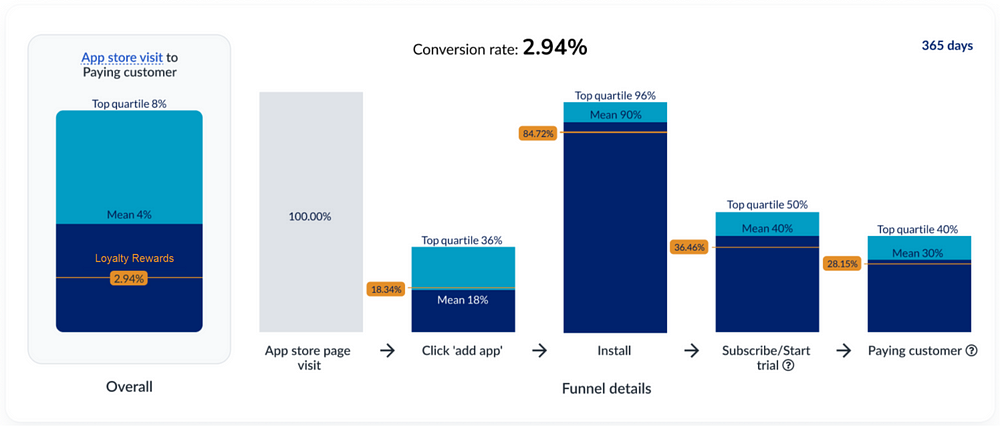
For traffic originating from Shopify, merchants first encounter your app card before clicking through to your Shopify app store page. Your app card needs to entice users to click.
If you plan to run Google ads, you must have a landing page. For at least some search keywords, you’ll only be allowed to place ads in Google if they do not lead to the Shopify domain, which disqualifies your Shopify app store page.
Your landing page’s header should prominently feature your app’s value proposition for Shopify merchants. Include a product image, references to Shopify reviews and satisfied customers, and a clear call to action inviting users to start a free trial.
Below the header, showcase your app’s key features, pricing details, user testimonials, social proof, and address frequently asked questions. If your landing page is lengthy, reiterate your value proposition and calls to action throughout the page.
The average conversion rate of app store visitors to “add app” click is around 20%. Top converting Shopify app store pages reach over 40%.
Reviews serve as a reliable indicator of your product’s quality, popularity, and maturity. It’s crucial to maximize your review count while maintaining a high rating. If you’re just starting out, make sure that your product is stable enough to generate positive reviews. Offer readily accessible support, especially during the initial stages. Consider temporarily making your product free to accumulate positive reviews quickly.
Ensure that the visuals accompanying your listing exude professionalism and effectively convey your value proposition, key features, and uniqueness. If you choose to include a video, use a thumbnail that effectively communicates your value and features. It doesn’t have to be a screenshot from the video.
When potential customers browse your app store page, they often compare it to similar offerings from your competitors. To stand out, you must captivate their attention with a concise value proposition. While strategically incorporating relevant keywords for SEO, you need to succinctly explain your product’s functionality, the value it delivers, and what makes it unique.
The post-install funnel takes merchants through subscription, setup, onboarding, and in-trial experience and communication. For most apps, this part of the funnel is long, complex, and converts poorly. That makes it a great target for funnel optimization.
Apps with a high post-install conversion rate send merchants to subscribe before onboarding. After install, merchants are sent to the pricing page where they need to choose a plan. After selecting their plan, merchants are sent to the subscription page, where they need to agree to your fees and start their trial.
Shopify’s embedded apps capability helps conversion by allowing apps to mimic Shopify’s look and feel, and to interact with merchants from within Shopify’s admin panel. In addition, Shopify rewards embedded apps with a badge and higher SEO placement. Going fully embedded is a big jump. Many apps opt to start by embedding the pricing and dashboard pages only.
The objective of onboarding is to quickly and easily get trialists to the point where they experience your app’s value for their business. Automate whatever you can and minimize steps. Instead of offering multiple options to merchants at the time of onboarding, decide for them and allow changes later. The less steps and effort, the higher the conversion rate.
Once the trial starts, the customer is yours to lose. Use your app’s dashboard to show graphs and stats showcasing your app’s value. Checking data can be very addictive, especially in the beginning when it is accumulating. Use email marketing to keep trialists interacting with your app. Interaction increases familiarity, perceived value, and conversion.
Bessemer Venture Partners call pricing “The most common untapped growth lever.”
Pricing affects the conversion rate in two places. First, merchants consider what they’ll need to pay you to decide whether to click “add app” on your Shopify app store page. Then, at the end of the trial, merchants ask themselves if they’ll get enough value for what you’re asking them to pay.
Pricing can be used to grow revenues. Sometimes, you can get away with a large pricing increase that leads to a minor decrease in conversion. Other times, you can move a significant feature up a plan and a chunk of customers will move up with it. In some cases, switching to a usage-based pricing scheme can lead to explosive revenue growth.
Tiers are the most common pricing scheme for Shopify apps. Your pricing plans should ideally represent customer segments, with features and usage limits of each plan matching each segment’s use case and value. They should compare well with your competition.
Many Shopify apps with tier-based pricing offer a free plan. Shopify rewards apps that offer a free plan with a bump in search results placement, leading to more free traffic. A free tier helps convert the traffic into free active users, who unfortunately are not free for you. Converting free users into paying customers is challenging. It’s much easier to convert trialists of a paid plan into paying customers.
Apps in Shopify categories where usage-based pricing can work should definitely consider it. When merchants subscribe to a service, they do so because the value the service provides them is greater than its cost. This equation is at risk in a recurring subscription. You know what you’re paying but you don’t know what you’re going to get. Whatever you get, you pay the recurring fee.
Usage-based pricing ties the fee directly to a key metric that can be measured and that has direct value for the merchant. The more value, the more payment. Zero value vs payment risk.
If your app provides significant measurable value, usage-based pricing can help increase your conversion rate by reducing the merchant’s risk. At the same time, usage-based pricing can grow your average revenue per customer because customers accept increased fees in return for increased value.
Hybrid pricing means you have a tier-based recurring fee and a significant usage-based component. A recurring fee assures a revenue stream from customers. The usage-based component allows the recurring fee to be set low, minimizing friction. The incremental component, to which merchants are less sensitive, helps increase the average revenues per customer. In many ways, it’s the best of all worlds.
To scale your app to $100K MRR and beyond, you need to master traffic, conversion, and monetization.
Use Prys to know your top keywords and marketing campaigns. Maximize SEO for your top keywords. Grow performance marketing at positive ROI. Develop additional Shopify app marketing tactics.
Focus on the most underperforming funnel steps. Optimize app card, landing page, and Shopify app store page. Above all, optimize your post-install funnel.
Optimize tier-based pricing to grow revenues. If you offer a free tier, optimize conversion to a free trial of a paid plan. Consider usage-based or hybrid pricing.
Grow your Shopify app in 2025 – Part 1: Marketing & Traffic Acquisition
Grow your Shopify App in 2025 – Part 2: Conversion Optimization Best Practices
B2b SaaS: How we multiplied conversion rate by 16x and scaled to a $100M exit
Since 2018, we’ve been helping Shopify apps achieve exceptional growth.
Our team at Convert2x offers a comprehensive solution to scale your Shopify app:
– Grow organic and paid traffic
– Optimize your Shopify funnel
– Maximize monetization
Convert2x was founded by Boaz Lantsman, a repeat entrepreneur and conversion rate optimization expert. Since our inception, we have focused on Shopify apps, perfecting every aspect of scaling: from SEO and paid traffic acquisition through end-to-end funnel optimization that maximizes monetization.
Before founding Convert2x, Boaz led marketing at a B2B SaaS startup, where his strategies multiplied the conversion rate by 16x and increased sales by 7x, leading to the company’s acquisition by DocuSign for nearly $100 million. Following this success, Boaz co-founded RoutePerfect, a travel startup where he achieved a 12x increase in conversion rate and scaled the platform to 5 million users and $500K MRR.
In addition to his work at Convert2x, Boaz co-founded Prys, a breakthrough Shopify app growth platform (https://www.prys.io). Prys provides end-to-end attribution, showing which search terms and campaigns drive your revenues, and offering actionable insights to scale your Shopify app.
At Convert2x, we apply Boaz’s proven methodologies and our team’s extensive expertise to help Shopify apps thrive. Join us, and let’s grow your app to new heights.































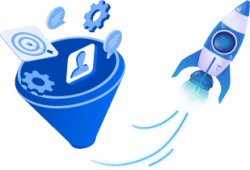
We help Shopify apps find and prioritize keywords, scale traffic with SEO and paid ads, maximize monetization, and optimize the Shopify app store page and post-install funnel.
I’ve worked with many consultants before, who are just in it to sign another client and make another dollar. Boaz is far from that type of person. There haven’t been many people in my career who I’ve worked with that “get it” quite like Boaz. He uses a data-driven approach and industry knowledge to provide strategies that work. He helped us optimize some areas of our business better than I could have imagined. I thought some of the projections he proposed to us were impossible, but we’ve actually outperformed these and are still on our way up. I couldn’t recommend Boaz more (unless you are a competitor, in which case he sucks…)